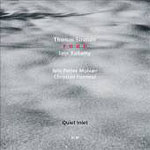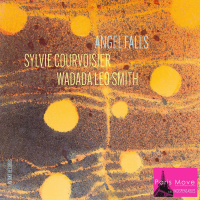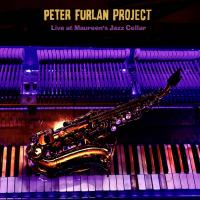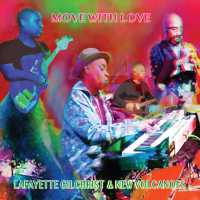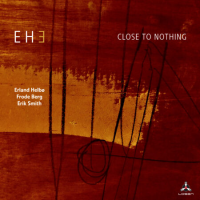Home » Jazz Articles » Album Review » Food: Quiet Inlet
Food: Quiet Inlet
Even as a duo, Food generates a lot of sound. Strønen, in particular, combines bastardized drum kit, hand percussion and technology into a distinctive soundscaping approach, from pulse-driven to textural; spatially ethereal to jagged and dense. Ballamy's more economical playing is equally key in establishing a group sound, and based on its performance at Punkt 2006, Food could easily have continued on as a duo, but increases the unpredictability quotient by introducing a third player to the set.
Ballamy has an ideal foil in Molvær on the airy "Chimaera," where Strønen creates an odd jumble of electronics and in-the-gut percussion, sampling his band mates in real time to augment the hovering landscape. Molvær's harmonizer expands his recognizable tone, over which he orbits lyrically with Ballamy's equally spare and melodic lines. On the asymmetrical "Becalmed," delays and looping turn simple motifs into serpentine ellipses, where soprano and trumpet interact in and out of time, as fragments reappear across the three-dimensional landscape, often buried in the weeds of the mix. A more decided rhythm and gentle pedal tone lend "Cirrina" its foundation, with Ballamy and Molvær engaging in an extended call-and-response, but this is no exercise in competitive chops; it's a sonic laboratory where the two push-and-pull, creating a dynamic ebb and flow that ends almost as soon as it begins, with Strønen alone on the fade-out.
Fennesz's contributions are more difficult to discern, if only because he's sculpting sound with his guitar as a controller, rather than playing it in more conventional fashion. Still, his are strikingly different than Molvær's, creating jagged and darker sonics on the closing "Fathom," and a more cushiony envelope of sound on the opening "Tobiko," where Strønen's propulsive rhythm reflects his use of an array of different sticks and brushes (and his hands) to strike drums, cymbals, gongs, bells, wooden blocks and more. Fennesz's tracks are more fervent in energy and groove, with "Mictyris" driving forward with a curious hint of skewed New Orleans Second Line which gradually devolves into freer terrain.
As fundamental as Ballamy lyricism is—even in the most foreboding spaces—it's Strønen who provides much of Food's sonic direction. Strønen's unique sense of time, space and placement has become Food's true core, his increasingly sophisticated, electro-acoustic mélange effortlessly propelling Quiet Inlet's eminently appealing impressionism.
Track Listing
Tobiko; Chimaera; Mictyris; Becalmed; Cirrina; Dweller; Fathom.
Personnel
Iain Ballamy
saxophone, tenorThomas Strønen: drums, live electronics; Iain Ballamy: tenor and soprano saxophones; Nils Petter Molvær: trumpet and electronics (2, 4-6); Christian Fennesz: guitar and electronics (1, 3, 7).
Album information
Title: Quiet Inlet | Year Released: 2010 | Record Label: ECM Records
Tags
PREVIOUS / NEXT
Support All About Jazz
 All About Jazz has been a pillar of jazz since 1995, championing it as an art form and, more importantly, supporting the musicians who make it. Our enduring commitment has made "AAJ" one of the most culturally important websites of its kind, read by hundreds of thousands of fans, musicians and industry figures every month.
All About Jazz has been a pillar of jazz since 1995, championing it as an art form and, more importantly, supporting the musicians who make it. Our enduring commitment has made "AAJ" one of the most culturally important websites of its kind, read by hundreds of thousands of fans, musicians and industry figures every month.


